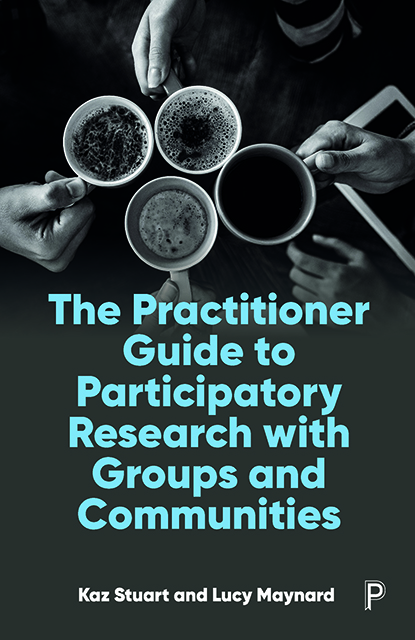Book contents
- Frontmatter
- Contents
- List of Figures and Tables
- Glossary
- About the Authors
- Acknowledgements
- Foreword
- Foreword
- Introduction
- 1 Just What is Participatory Research?
- 2 How do We Begin to Plan Our Participatory Research Project?
- 3 What Do We Want to Explore and Why?
- 4 What Ideas are the Foundations of Our Research?
- 5 How Will We go About Exploring Our Questions?
- 6 Who Can Get Involved to Explore Our Questions?
- 7 How Shall We Collect Our Data?
- 8 What Do We Do With Our Data?
- 9 How Do We Get Our Messages Out There?
- 10 How Do We Keep Everyone Safe?
- 11 Doing and Reviewing Participatory Research
- Conclusion
- References
- Index
11 - Doing and Reviewing Participatory Research
Published online by Cambridge University Press: 21 June 2023
- Frontmatter
- Contents
- List of Figures and Tables
- Glossary
- About the Authors
- Acknowledgements
- Foreword
- Foreword
- Introduction
- 1 Just What is Participatory Research?
- 2 How do We Begin to Plan Our Participatory Research Project?
- 3 What Do We Want to Explore and Why?
- 4 What Ideas are the Foundations of Our Research?
- 5 How Will We go About Exploring Our Questions?
- 6 Who Can Get Involved to Explore Our Questions?
- 7 How Shall We Collect Our Data?
- 8 What Do We Do With Our Data?
- 9 How Do We Get Our Messages Out There?
- 10 How Do We Keep Everyone Safe?
- 11 Doing and Reviewing Participatory Research
- Conclusion
- References
- Index
Summary
Chapter overview
This chapter will talk through how to ‘get on with it’! That is how to do your research project having planned it all out in a participatory manner with the help of the first ten chapters. We will discuss how you move from research design planning to project planning as well as covering teamwork and problem solving as keys to successful implementation. We also talk about the ‘messiness’ you are likely to encounter in research in order to reassure you this is okay. The final half of this chapter goes on to discuss how you can review and evaluate quality and success with co-researchers throughout the process, as well as at the end.
Project planning: how to plan what will happen when
From our perspective, as long as we’ve sorted our ethics, let’s just get on with it! You’ll most certainly learn as you go and tweak the project with the co-researchers. Acceptance of this evolving approach helps you jump in. This seems especially important as the early part of ‘doing’ is likely to be delivery planning – which seems like not doing! But you’ll be doing this with the co-researchers and so it is most certainly ‘doing’.
By working through the chapters in this book you will have developed a good understanding of research design and how to undertake a project with co-researchers. You may still need to collectively decide what order things will happen in, who will do them, when they need to be done by and how you will know they have been completed. Collaborative project planning is helpful here – it enables you to turn your research design into a project plan for everyone to work from.
In group A from our case studies, the project plan had to take account of students’ school timetables and ensure it fitted into a regular weekly timetabled slot. This provided a helpful overall structure and parameters to work within. It never appeared to be restricting, perhaps because this was what the students were used to, and perhaps because they shaped their project to fit within this as they knew their boundaries.
- Type
- Chapter
- Information
- Publisher: Bristol University PressPrint publication year: 2022



